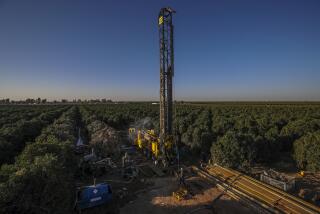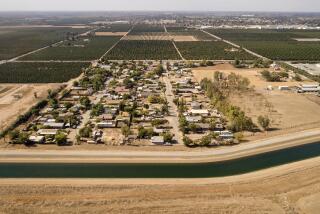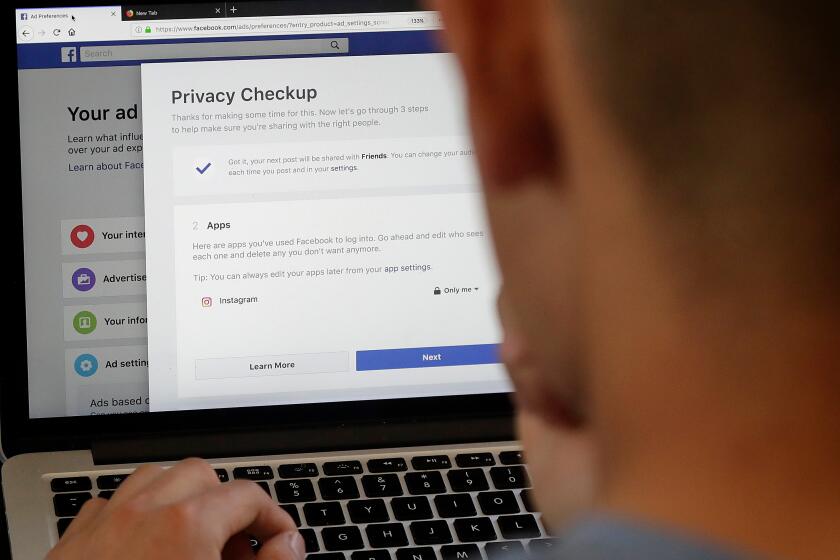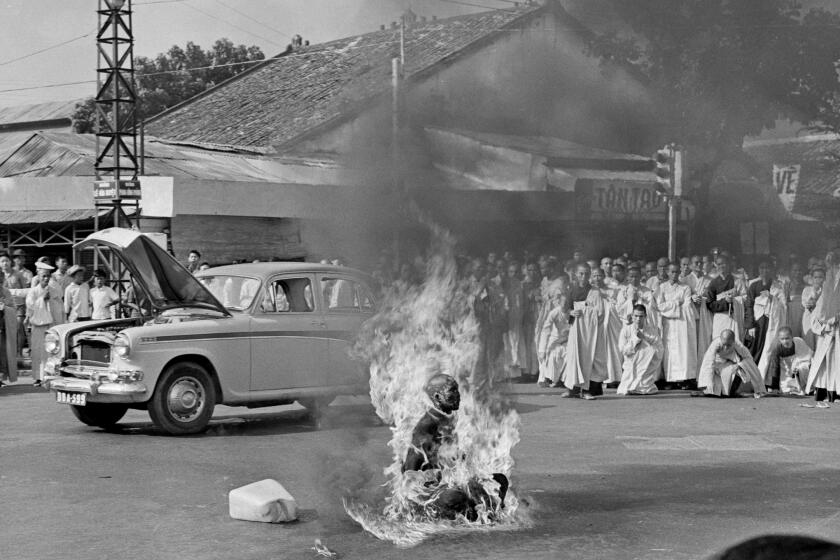Op-Ed: For millions of Americans, lack of access to water isn’t just a drought problem
The 4 million residents of drought-stricken Cape Town, South Africa, have held Day Zero at bay. Their water-saving efforts appear to have kept the city’s taps from running dry just yet. But as Capetonians breathed a sigh of relief this month, some Americans I know left their homes in rural New Mexico, bucket in hand, to collect water from a nearby livestock trough. Those dirty two or three gallons would be all they had for drinking, cooking, cleaning and bathing that day. For these Americans, it is always Day Zero.
Water poverty affects nearly 1.6 million people in the United States, but it remains a stubbornly invisible crisis. Before widespread solutions can be rolled out, however, we need to know who exactly is getting by without the taps and the toilets the rest of us take for granted. But such granular data simply doesn’t exist.
Here’s a bit about what is known. Today, African Americans are twice as likely as whites to live without modern plumbing. In majority-black Lowndes County, Ala., for instance, only 20% of the community is connected to the municipal sewer system. On the Navajo Nation, where I work, 40% of the nearly 170,000 residents still haul water home in bottles or buckets, often at great expense. Impoverished rural communities in Appalachia face water-borne diseases at rates rarely seen in developed nations. Even here in California more than 1 million people rely on public drinking water systems that have violated state safety standards, threatening their health.
These observations, while shocking, are really just anecdotal.
The most comprehensive data we have on U.S. water poverty comes from the Census Bureau, but it is maddeningly unspecific and often inaccurate. The Census Bureau’s American Community Survey tells us there are about 1.6 million Americans living in housing that lacks “complete plumbing facilities.” That could mean they don’t have a flush toilet or a bathtub or shower. But it could also mean they don’t have piped water at all. Which one is it?
Census data doesn’t explain why these communities still don’t have access to water and sanitation when nearly every other American does.
The census data does reveal this much: The problem is experienced most acutely by African Americans in the rural South, Latinos in the rural Southwest, Native Americans and Alaskan Natives, residents of deep Appalachia, and migrant and seasonal farmworkers. These are notoriously hard-to-count populations for the census, and data on them is often inaccurate. Even worse, the census’ big number — 1.6 million — doesn’t include the millions of Americans who have plumbing but unsafe tap water. Think of Flint, Mich.
We are seeing only the broadest outline of the problem. Census data doesn’t tell us which communities are too remote to be served by traditional water lines, which are too poor to afford their own septic systems, or which live too close to water sources contaminated by agriculture or industry. It doesn’t tell us how communities cope with these challenges every day. Most important, census data doesn’t explain why these communities still don’t have access to water and sanitation when nearly every other American does. We need both qualitative and quantitative information from within these communities. Without it we can’t forge the right policy solutions, accelerate the implementation of essential water projects, or build the public and political will to end this problem once and for all.
Some important work is already being done to improve equity in U.S. water access, despite this lack of data. Some of the finest examples were recently outlined by the U.S. Water Alliance in its national briefing paper, An Equitable Water Future. San Francisco is addressing disparities in water cost and quality for low-income residents and using the billions of dollars they’re investing in system upgrades to create jobs in disadvantaged communities. In California’s Central Valley, the Community Water Center is organizing residents with poor water quality to give them a voice in policymaking. This month, my organization, DigDeep, will finish a project to bring clean water to the St. Michael’s Assn. for Special Education, the only special-needs school on the Navajo Nation. Each of these achievements creates prosperity, health and joy.
For this work to reach a national scale, we need more specificity from the census plumbing data, and a commitment from state and local governments in affected areas to examine the root causes of local water poverty. Universities and NGOs can help by gathering and synthesizing existing national data and by embedding our own researchers in affected communities. They should also convene stakeholders — human rights organizations, the water sector, the private sector, philanthropy and affected communities themselves — to arm them with knowledge.
Every American needs access to the basics — water, food, shelter — to participate fully in society. When these conditions are met, our communities and our economy thrive. Instead of waiting for the next Cape Town or California water crisis to wonder, “Will we still have water tomorrow?” we should be asking right now, “Who needs water today?”
George McGraw is the founder of Dig Deep, a Los Angeles-based nonprofit working to bring clean running water to every American.
Follow the Opinion section on Twitter @latimesopinionand Facebook
More to Read
A cure for the common opinion
Get thought-provoking perspectives with our weekly newsletter.
You may occasionally receive promotional content from the Los Angeles Times.






